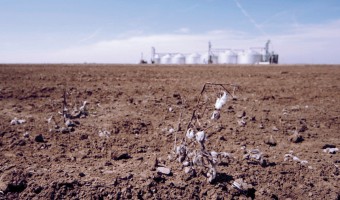
Lesson Summary
Students will use the stories in Episodes 1 and 4 to better understand fact and opinion while engaging in argument, discussion, and writing to hone this critical skill. (The activities in this first set of lessons are adaptable for all of the stories in the series.)
Learning Objectives
- In a time of mass media, students will strengthen their ability to discern fact from opinion.
- Differentiate between evidence that is strong and evidence that is weak.
- Evaluate the strength of specific evidence related to environmental issues.
Teacher Background
Argument – evidence – claims – credible sources – all skills that students need to discern the world around them. As students engage in the stories, they will have to negotiate their understanding which will require learners to construct a richer version of the concept, in this case, climate change, and transform their understanding from where they originally started.
Traditionally, science laboratory activities are structured around the laboratory report format. Students are expected to engage in a format that outlines the hypothesis, procedures, observations, results, and discussion. Unfortunately, this format is typically used by scientists only to report their work to journals for publication. This is not what occurs in science laboratories. Scientists are involved in posing questions, making claims, providing evidence, debating with each other, comparing their answers with others in the field, and attempting to look for patterns across their results.
Scientific argument is at the very core of science activity. Having completed this process of argumentation, scientists then prepare their written reports for publication. (Questions, Claims and Evidence, 2008) According to Meier, Hand, Hockenberry, and Wise, it is important to remember that the learner controls learning and it is up to you, the classroom teacher, to orchestrate opportunities where students can share and expand their developing understandings.
Lesson Videos
Lessons
Stories MS-1: Last Stand, Pray for Rain, Preacher’s Daughter
In “Last Stand,” YEARS correspondent Harrison Ford travels to Indonesia to investigate deforestation caused by the palm oil industry. In “Pray for Rain,” Don Cheadle visits Plainview and finds that most people blame the drought on the will of God or say it’s part of a natural cycle. In “Preacher’s Daughter” Ian Somerhalder travels to North Carolina to listen in on both sides of the evangelical community’s debate over climate change.
Materials MS-1

Make sure you have these materials before commencing the lesson: Evidence Organizer handout, Fact/Opinion Sorter handout, Fact/Opinion Overview – PowerPoint
Vocabulary MS-1

This is where you will find the vocabulary terms for this Lesson.
Prerequisite Knowledge MS-1

Before beginning determine where your students stand on their understanding of Fact v. Opinion. If they are well versed then proceed with the Engage. If you feel your students need a refresher please follow these instructions before starting at the Engage.
Engage MS-1
Length: 20 minutes

Ask students about forensics shows on TV. What are some facts the investigators might collect? What are some opinions the investigators might run in to? What kinds of evidence are used to prove a case? What kinds of evidence are the most credible? How are credible sources determined?
Explore MS-1
Length: 45 minutes

In part 1 of this activity, students use the Evidence Organizer to determine the strength of evidence. In part 2, students create their own arguments and provide supporting evidence.
Explain MS-1
Length: 55 minutes

Watch the following segments from Episode 1. After watching each set, have students work in small groups to answer the questions. Discussing the evidence and opinions found in each clip is important in helping students increase their critical thinking skills related to the world they live in including issues that affect us locally and globally.
Elaborate MS-1
Length: 20 minutes

You will provide students with a statement about climate change to which they will either agree or disagree. Assign a side of the room that will represent “agree” and a side of the room that will represent “disagree”. Explain there is no middle ground, thus the title – Take a Stand.
Evaluate MS-1
Length: 15 minutes

The interactive online quiz provides instant feedback about your knowledge of this subject. The justified true/false questions are meant for use in the classrooms.
Taking Actions and Designing Solutions MS-1

Taking actions and/or designing solutions to our local, national, and global problems are a personal journey. Via Facebook and Twitter, share how you are taking action to combat climate change or if you’ve designed potential solutions share those on Instagram or make a Vine.
Writer’s Corner MS-1

Without language there is no science. To be practicing scientists and derive new knowledge, we need language – reading, writing, talking, listening, enacting, and visualizing. Writing is one way to communicate understanding of our learning while allowing us to be creative in our delivery and provide insight and possible solutions to problems.
Agents of Change MS-1

Dr. Katherine Hayhoe is an Atmospheric Scientist and Associate Professor in the Department of Political Science and Director of the Climate Science Center at Texas Tech University.
Careers MS-1

Inspired by Episode 1? Thinking about your future? You have the power to make a difference today and in the future. Check out our episode 1 profile on Dr. Katherine Hayhoe and look into other careers inspired by the issues presented in Episode 1: Dry Season.
Resources and Links MS-1

Use the following print and online resources to supplement your understanding of the material covered in this lesson.
Standards MS-1

Review and download the standards tables for Middle School Lesson 1: NGSS and 21st Century Skills, CCSS, and NCSS.
PDF Lesson Plan MS-1

Download a printable PDF lesson plan for Middle School Lesson 1, including justified true-false form and formatted standards tables.

